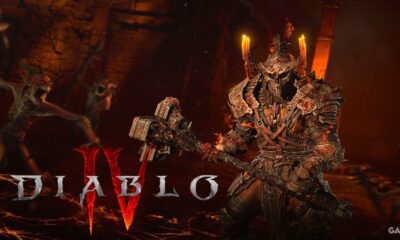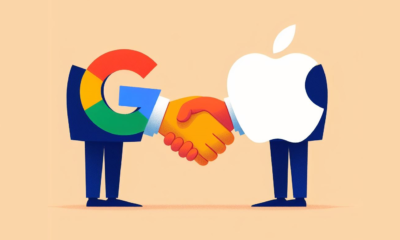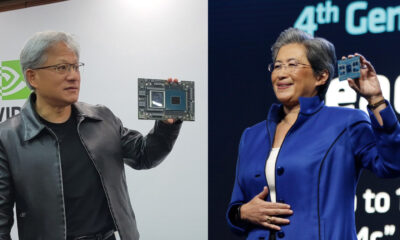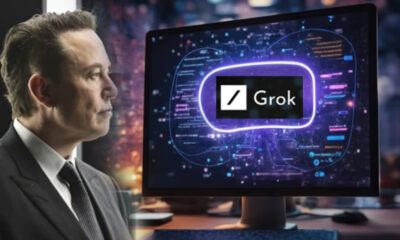AI
Tesla is burdened with too many risks as Elon Musk ventures into robotics, supercomputers, and AI.

At least one senior-level Finance Director from Tesla had to transfer to work at Twitter’s parent company, as ordered by Elon Musk.
According to CNBC, many of Elon Musk’s ambitious projects and their interrelationships are facing increasing scrutiny as the CEO of Tesla continues to add to his already long list of ventures.
During Tesla’s earnings conference call on Wednesday, analyst William Stein from Truist asked Musk about another technology joint venture he recently formed and established in Nevada called xAI. Musk has mentioned that this artificial intelligence startup aims to compete with Google Bard or OpenAI’s ChatGPT someday and has plans to collaborate with Tesla on software as well.
Stein posed the question: “For investors who think there might be a lot of value in Tesla’s AI features and products, they might be concerned to see you pursuing another effort where AI is central. Can you elaborate on how xAI might excel, compete with Tesla, or in what way this joint venture can enhance the value of what Tesla does?”

Musk stated that xAI and artificial intelligence in general, which this joint venture focuses on, will bring some value to Tesla, especially in terms of talent acquisition.
“There are only a few of the world’s best AI engineers and scientists ready to join a startup, but they are not willing to join a relatively established large company like Tesla,” Musk said. “So, I thought, well, it’s better to have a startup company that I run than to have them go work somewhere else. That’s the origin of xAI.”
As an example of xAI’s appeal, Musk mentioned that he could only lure a top material science engineer away from his job at Apple by promising that he could work concurrently for SpaceX and Tesla. The engineer Musk referred to is Charles Kuehmann, who joined Tesla in late 2015 and currently holds the position of Vice President of Material Engineering at both SpaceX and Tesla, reporting directly to the CEO.
The issue surrounding Musk and his various business ventures also came to light earlier this month when Senator Elizabeth Warren called on the Securities and Exchange Commission to investigate the relationships with Twitter and corporate governance issues.
Musk led the $44 billion acquisition deal of the social media company last year and temporarily appointed himself as CEO. He currently holds controlling shares and serves as CTO and Executive Chairman of Twitter while maintaining his roles as CEO of Tesla and the aerospace company SpaceX. Additionally, he is the founder and financier of the brain-computer interface startup Neuralink and the tunneling joint venture, The Boring Co.
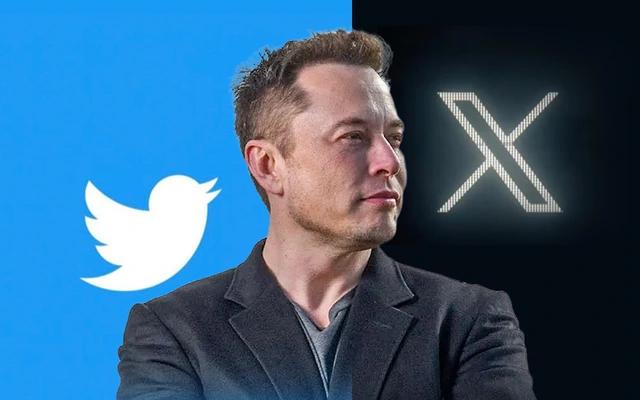
Among these ventures, Tesla is the only publicly traded company. However, the electric vehicle company has never disclosed to shareholders the exact number of employees, time, and money they have spent in supporting Musk’s other business projects. Tesla has also not provided a clear explanation for sending employees to work at Twitter during the early stages of Elon Musk’s tenure there. Previously, Musk had hired employees from Tesla, SpaceX, and The Boring Co. to assist him in taking over Twitter.
At least one senior-level employee from Tesla has moved to work for Musk’s X Corp., the parent company of Twitter. Court records reveal that Dhruv Batura, who worked at Tesla since late 2013 and held a senior finance position there, is now a senior finance director at X Corp. Batura posted a job advertisement for X Corp. on Twitter on the day of Tesla’s Q2 earnings conference call.
In a disclosure made in May 2023, Tesla revealed some details about its transactions with related parties. Among them, Tesla disclosed that “Twitter is a party to certain commercial arrangements and has provided certain support to Tesla. Under these arrangements, Twitter incurred total expenses of approximately $1 million in 2022 and $0.4 million in 2023 up to the end of February.” However, Tesla did not specify exactly what Twitter is purchasing from the company.
The risks involved include lack of focus and employee burnout.
According to Professor of Organizational Behavior at London Business School, Randall S. Peterson:
“Musk is making a complex argument by saying, ‘I’m helping Tesla by preventing these great people from working at a direct competitor.”
Peterson notes that most startups fail, and those who want to start their own companies are unlikely to join direct competitors of Tesla in the automotive industry.
Peterson highlights that Musk’s numerous ambitious projects can pose risks to Tesla, and shareholders should seek more detailed information.
“It’s challenging to focus and excel in anything when you’re running multiple companies. That’s a risk around a CEO himself. Would shareholders of most companies accept their CEO running multiple other companies at the same time? The answer to that is probably not. So, it raises the question of what the Tesla board is doing, whether they are independent at any level, or if they are so enamored with Musk that they not only accept his unconventional way of doing things but might overlook fundamental issues as long as there’s money,” Peterson said.
He notes that boards at companies have fallen into crisis, such as Enron and Royal Bank of Scotland, because they couldn’t rein in their CEOs despite signs of problems over several quarters.
Peterson adds that another risk is that Musk’s employees may feel pressured to work on multiple projects outside of Tesla. In their efforts to please Musk or gain new work experiences, they may not recover after work and become burnt out. Peterson says burnout can lead to high turnover or poor performance.
Finally, the professor also notes that Musk may be creating distractions and hindering the focus of his employees, even if his intention is to foster cross-collaboration between his businesses.
“You need intense focus to become excellent in a particular field, both as an individual and as a corporation. That’s why we’ve seen a trend of moving away from conglomerates in the 70s to more focused companies nowadays,” the professor said.
However, Musk seems to be doubling down on the non-compromising collaboration between his companies in his growing empire.
In a recent earnings report, Musk was asked for an update on Tesla’s progress in developing a humanoid robot named Optimus. He spoke about the future and expressed that one day Tesla could collaborate with Neuralink to create prosthetic arms and legs to help disabled individuals regain mobility or even full dexterity.
According: CNBC
AI
Elon Musk’s super AI Grok was created within two months.
The development team of xAI stated that Grok was trained for two months using data from the X platform.
“Grok is still in the early testing phase, and it is the best product we could produce after two months of training,” xAI wrote in the Grok launch announcement on November 5th.
This is one of the AI systems that has been trained in the shortest amount of time. Previously, OpenAI took several years to build large language models (LLMs) before unveiling ChatGPT in November 2022.
xAI also mentioned that Grok utilizes a large language model called Grok-1, which was developed based on the Grok-0 prototype with 33 billion parameters. Grok-0 was built shortly after the company was founded by Elon Musk in July of this year.
With a total time of approximately four months, the company asserts that Grok-1 surpasses popular models like GPT-3.5, which is used for ChatGPT. In scoring benchmarks on mathematical and theoretical standards such as GSM8k, MMLU, and HumanEval, xAI’s model outperforms LLaMa 2 70B, Inflection-1, and GPT-3.5.
For example, in a math problem-solving test based on this year’s Hungarian National High School Math Competition, Grok-1 achieved a score of 59%, higher than GPT-3.5’s score of 41% and only slightly below GPT-4 (68%).
According to xAI, the distinguishing feature of Grok is its “real-time world knowledge” through the X platform. It also claims to answer challenging questions that most other AI systems would reject.

On the launch day, Musk also demonstrated this by asking the question, “the steps to make cocaine.” The chatbot immediately listed the process, although it later clarified that it was just joking.
This is the first product of Musk’s xAI startup, which brings together employees from DeepMind, OpenAI, Google Research, Microsoft Research, Tesla, and researchers from the University of Toronto. Musk is also a co-founder of OpenAI, the organization behind ChatGPT, established in 2015. He later left the company due to disagreements over control. During his departure, he declared his intention to compete for talent from the company while also cutting off the previously promised $1 billion in funding.
Read more: Google, Meta, Microsoft, OpenAI… agree with voluntary measures to protect AI.
AI
AI generation – a new battleground in phone chip design.
Smartphone and mobile chip manufacturers are participating in the wave of AI generation to bring this technology to phones in the near future.
AI generation has exploded over the past year, with a range of applications being released to generate text, images, music, and even versatile assistants. Smartphone and semiconductor companies are also building the latest hardware to not miss out on the wave. Leading the way is Google’s Pixel 8, while Qualcomm’s Snapdragon 8 Gen 3 processor is also set to be launched in the coming days.
The latest signs indicate that phone manufacturers are welcoming AI generation from Google. The Pixel 8 series is the first set of smartphones capable of operating and processing Google’s Foundation Models for AI generation directly on the device without the need for an internet connection. The company stated that the models on the Pixel 8 reduce many dependencies on cloud services, providing increased security and reliability as data is not readily available.
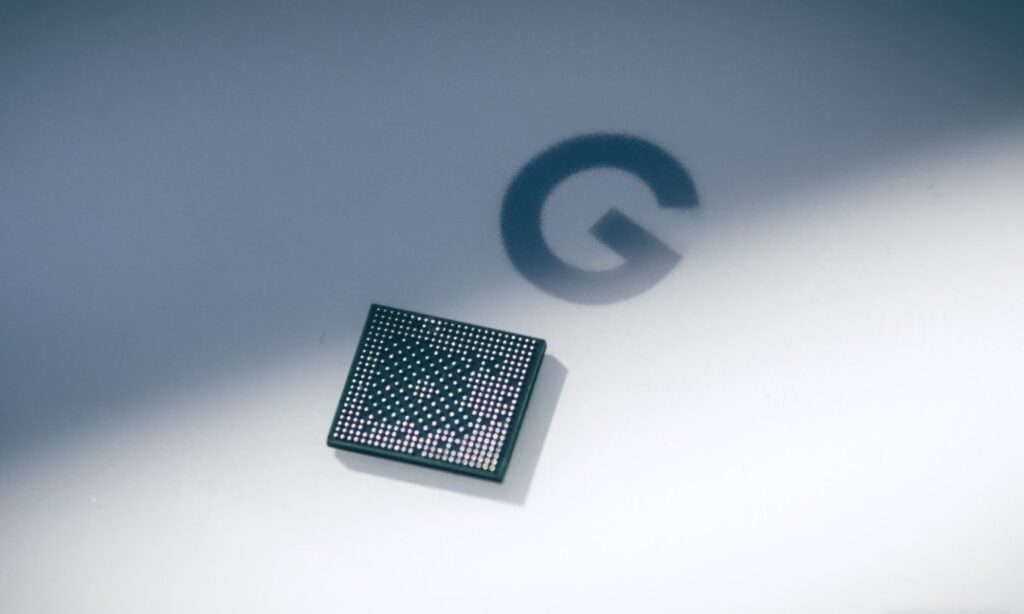
This has become a reality thanks to the Tensor G3 chip, with the Tensor (TPU) processor significantly improving over last year. The company usually keeps the operation of the AI chip secret but has revealed some information, such as the Pixel 8 having double the number of on-device machine learning models compared to the Pixel 6. The AI generation on the Pixel 8 also has the ability to compute 150 times faster than the largest model of the Pixel 7.
Google is not the only phone manufacturer applying AI generation at the hardware level. Earlier this month, Samsung announced the development of the Exynos 2400 chipset with AI computing performance increased by 14.7 times compared to the 2200 series. They are also developing AI tools for their new phone line using the 2400 chip, allowing users to run text-to-image applications directly on the device without an internet connection.
Qualcomm’s Snapdragon chip is the heart of many leading Android smartphones globally, which raises expectations for the AI generation capabilities on the Snapdragon 8 Gen 3 model.
Earlier this year, Qualcomm demonstrated a text-to-image application called Stable Diffusion running on a device using Snapdragon 8 Gen 2. This indicates that image generation support could be a new feature on the Gen 3 chipset, especially since Samsung’s Exynos 2400 also has a similar capability.
Qualcomm Senior Director Karl Whealton stated that upcoming devices can “do almost anything you want” if their hardware is powerful, efficient, and flexible enough. He mentioned that people often consider specific AI generation-related features and question whether the existing hardware can handle them, emphasizing that Qualcomm’s available chipsets are powerful and flexible enough to meet user needs.
Some smartphones with 24 GB of RAM have also been launched this year, signaling their potential for utilizing AI generation models. “I won’t name device manufacturers, but large RAM capacity brings many benefits, including performance improvement. The understanding capability of AI models is often related to the size of the training model,” Whealton said.
AI models are typically loaded and continuously reside in RAM, as regular flash memory would significantly increase application loading times.
“People want to achieve a rate of 10-40 tokens per second. That ensures good results, providing almost human-like conversations. This speed can only be achieved when the model is in RAM, which is why RAM capacity is crucial,” he added.

However, this does not mean that smartphones with low RAM will be left behind.
“On-device AI generation will not set a minimum RAM requirement, but RAM capacity will be proportional to enhanced functionality. Phones with low RAM will not be left out of the game, but the results from AI generation will be significantly better with devices that have larger RAM capacity,” commented Director Whealton.
Qualcomm’s Communications Director, Sascha Segan, proposed a hybrid approach for smartphones that cannot accommodate large AI models on the device. They can host smaller models and allow processing on the device, then compare and validate the results with the larger cloud-based model. Many AI models are also being scaled down or quantized to run on mid-range and older phones.
According to experts, AI generation models will play an increasingly important role in upcoming mobile devices. Currently, most phones rely on the cloud, but on-device processing will be the key to expanding security and operational features. This requires more powerful chips, more memory, and smarter AI compression technology.
AI
AI can diagnose someone with diabetes in 10 seconds through their voice.
Medical researchers in Canada have trained artificial intelligence (AI) to accurately diagnose type 2 diabetes in just 6 to 10 seconds, using the patient’s voice.

According to the Daily Mail, a research team at Klick Labs in the United States has achieved this breakthrough after their AI machine learning model identified 14 distinct audio characteristics between individuals without diabetes and those with type 2 diabetes.
The AI focused on a set of voice features, including subtle changes in pitch and intensity that are imperceptible to the human ear. This data was then combined with basic health information, including age, gender, height, and weight of the study participants.
The researchers found that gender played a determinant role: the AI could diagnose the disease with an accuracy rate of 89% for women, slightly lower at 86% for men.
This AI model holds the promise of significantly reducing the cost of medical check-ups. The research team stated that the Klick Labs model would be more accurate when additional data such as age and body mass index (BMI) of the patients are incorporated.
Mr. Yan Fossat, Deputy Director of Klick Labs and the lead researcher of this model, is confident that their voice technology product has significant potential in identifying type 2 diabetes and other health conditions.
Professor Fossat also teaches at the Ontario Tech University, specializing in mathematical modeling and computational science for digital health.
He hopes that Klick’s non-invasive and accessible AI diagnostic method can create opportunities for disease diagnosis through a simple mobile application. This would help identify and support millions of individuals with undiagnosed type 2 diabetes who may not have access to screening clinics.
He also expressed his hope to expand this new research to other healthcare areas such as prediabetes, women’s health, and hypertension.
-
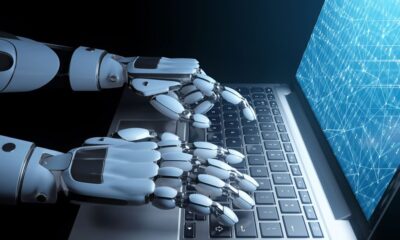
 AI1 year ago
AI1 year agoAI only needs to listen to the sound of keystrokes to predict the content, achieving an accuracy rate of up to 95%
-
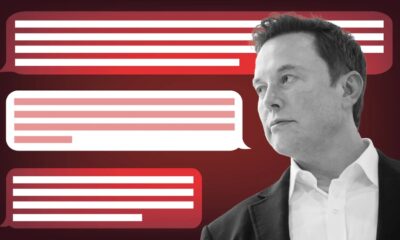
 AI2 years ago
AI2 years agoMusk aims to create a super AI to rival ChatGPT
-

 Mobile2 years ago
Mobile2 years agoProduction issue with iPhone 15 display raises concerns among users
-

 Entertainment2 years ago
Entertainment2 years agoSurprisingly, a single YouTube video has the potential to cause serious harm to Google Pixel’s top-of-the-line smartphone
-

 AI2 years ago
AI2 years agoUpon its debut, Google’s chatbot Bard dealt a cold blow to its very creator.
-

 Entertainment2 years ago
Entertainment2 years agoCS:GO Breaks Records with Surging Gamer Engagement and Increased Spending
-

 Crypto1 year ago
Crypto1 year agoExplore in detail about Web 3
-

 Tips & Tricks2 years ago
Tips & Tricks2 years agoHow to distinguish AI-generated photos?




